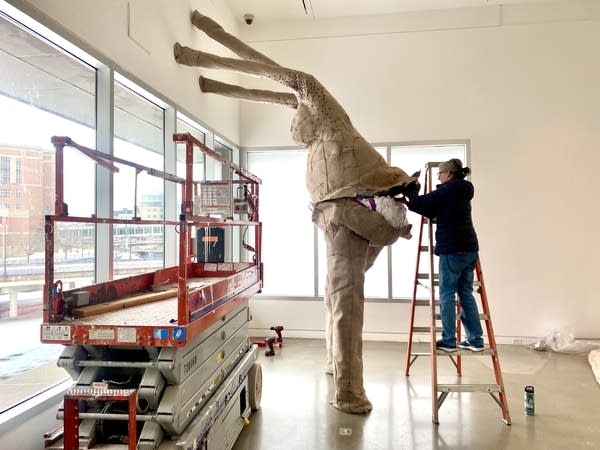Femme giants and more rise at the Rochester Art Center

Nicole Havekost with her "Settle" sculpture at the Rochester Art Center. “For me they get to take up space in ways that, as a woman, I haven't felt like was mine to take up or, you know, mine to claim,” said Havekost about her sculpture.
Alex V. Cipolle | MPR News
Go Deeper.
Create an account or log in to save stories.
Like this?
Thanks for liking this story! We have added it to a list of your favorite stories.



